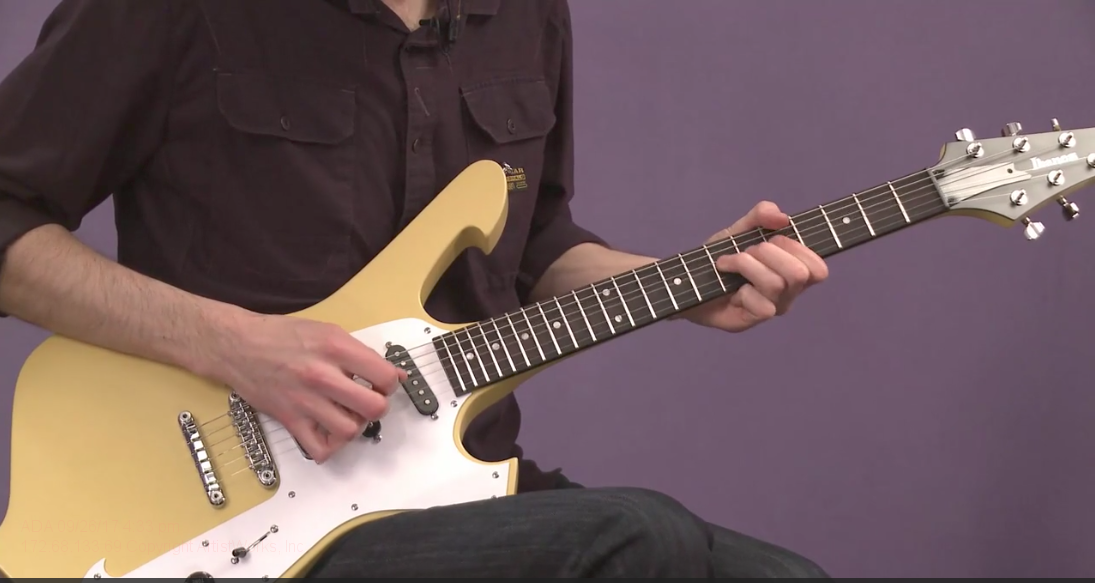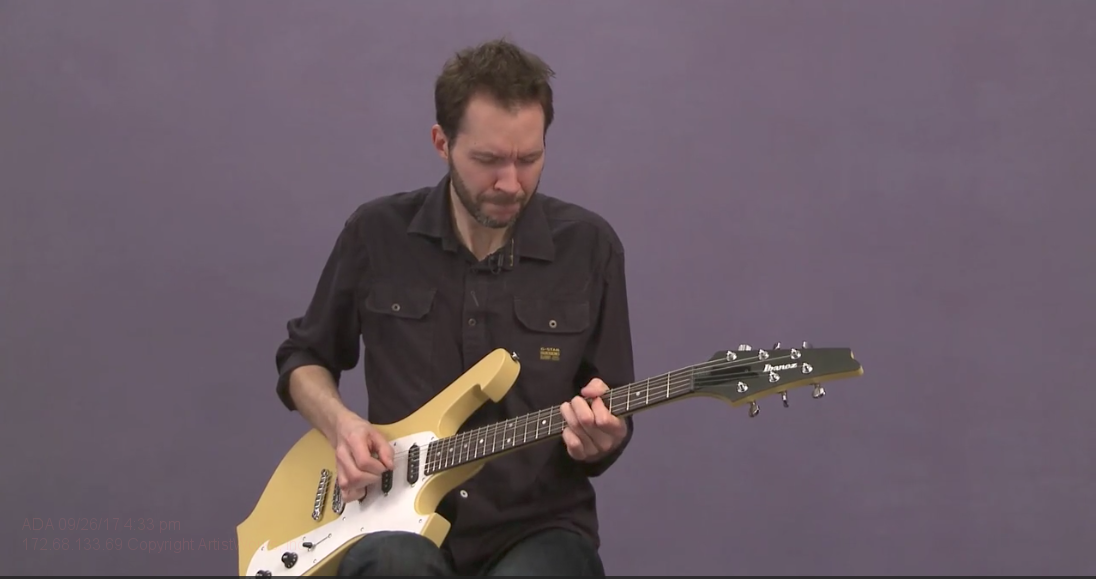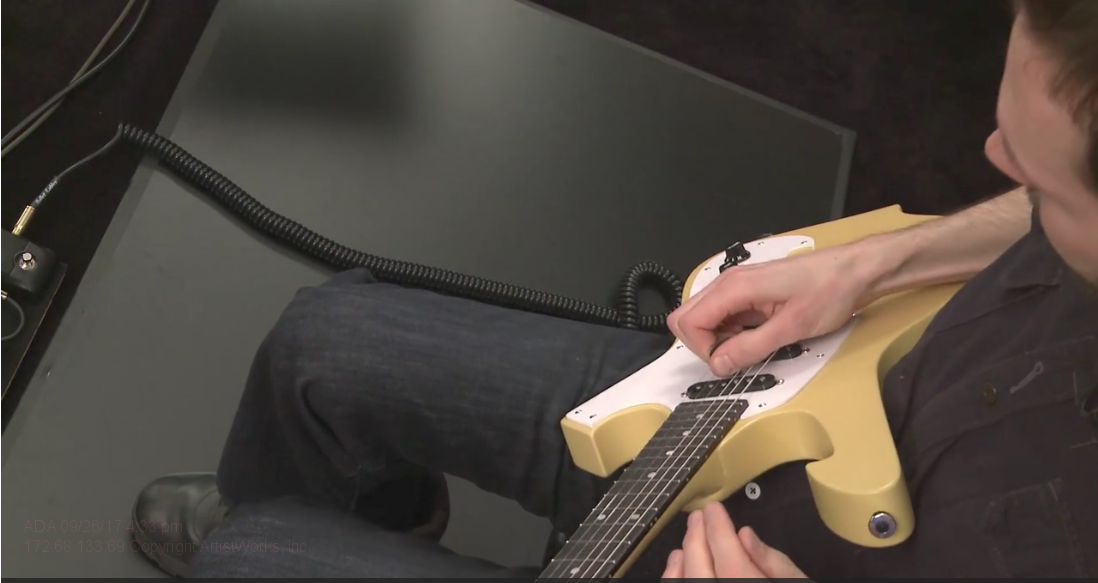Pick Muting For Rock Guitarists

As guitarists, we should strive to incorporate expressive techniques into our playing. After all, music is an expression of the soul. Having a well rounded toolbox of techniques will help you be more articulate as you transfer your ideas to notes on the guitar. With that in mind, we wanted to take some time to feauture an old favorite techique rock guitarists use: pick muting.
Read on to see how it differs from other types of muting techniques.
How Pick Muting Differs From Palm Muting and Left Hand Muting
The goal of pick muting is to produce short, staccato notes to complement palm muting and left hand muting. However, the difference is that the string is muted only with the pick and flesh of the picking hand thumb.
Let’s take a look at the particular technique used to effectively mute a vibrating string with the pick.

Stopping the String with the Pick
When using pick muting, the string is set in motion with a downstroke, and the pick ‘catches’ the string on the upstroke, stopping the vibration along with the flesh of the pick hand thumb.
The key here is that the upstroke does not actually follow through with the pick, causing the note to be sounded a second time. Rather, it merely returns to the string as though it were a magnet, applying only enough pressure to stop the string’s vibration.
Incorporating Alternate Picking
To incorporate alternate picking with pick muting, simply apply the aforementioned muting technique in reverse. That is, set the string in motion with an upstroke (having just stopped the string on the initial downstroke) and stop the vibration by ‘catching’ the string with a downstroke.
When this is properly executed, the result is essentially the same as regular alternate picking, only that we are now stopping the string’s vibration by quickly touching it with the pick before each successive stroke.
Now it’s time to combine bends with pick muting to produce some even more expressive phrases. Let’s take a look below.

Practicing Bends with Feeling
The trick to combining bends with pick muting is to develop a feel for how far to bend the string that is sounded first. This is also known as a “pre-bent” note, meaning that the string is already bent up ½ or one whole step before it is sounded.
The best way to practice this is to play the note that is one step (2 frets) above the fretted note, then bend the string up before sounding it, trying to match the pitch of the pre-bent note to the fretted note. For example, play the G string at the 7th fret. Then play the G string at the 9th fret. Next, prebend the G string at the 7th fret, estimating how far you have to bend to match the pitch of the 9th fret note.
Quick tip: If you find that your pre-bent note is sharp, ease off of the bend until it matches the pitch. If the pre-bent note is consistently flat, try squeezing your 1st and 2nd fingers against your 3rd finger and place the left hand thumb perpendicular to the back of the fretboard, adding leverage to your bend.
Now that you have all three types of muting in your arsenal, you’re well on your way to rock guitar mastery. Good luck, and remeber to enjoy the ride!

Are you ready take your playing to the next level? Click here for free sample lessons from Paul Gilbert!
Related Blogs:







Comments